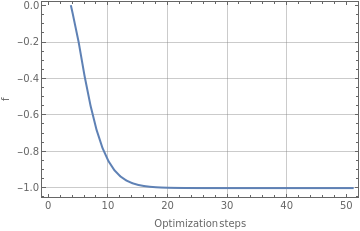Wolfram Language Paclet Repository
Community-contributed installable additions to the Wolfram Language
FubiniStudyMetricTensor[QuantumState[...] ,opts] | calculates the Fubini–Study metric tensor as defined by the VQE approach from a QuantumState with defined parameters |
QuantumState |
|
|
1 | 0 |
0 | 2 Sin[2θ1] |
QuantumNaturalGradientDescent[f,metric ,opts] | calculates the gradient descent of f using the defined metric tensor for the parameters space. |
QuantumState |
|

"Gradient" | None | indicate correspondant gradient function ∇f |
"InitialPoint" | Automatic | initial starting point for the optimization process |
"LearningRate" | 0.8 | step size taken during each iteration |
"MaxIterations" | 50 | maximum number of iterations to use |